Introduction to the Robin bird
Peacocks are among the most captivating and visually stunning birds in the animal kingdom. Known for their vibrant plumage and mesmerizing courtship displays, these birds have inspired art, culture, and mythology across the globe. In this comprehensive article, we will explore everything you need to know about peacocks—from their physical characteristics and behavior to their habitat, symbolism, and conservation status.
What is a Peacock?
The term peacock technically refers to the male of the species, while the female is called a peahen. Together, they are known as peafowl. There are three species of peafowl:
- Indian Peafowl (Pavo cristatus) – The most recognizable species, native to India and Sri Lanka.
- Green Peafowl (Pavo muticus) – Native to Southeast Asia and characterized by a more iridescent green sheen.
- Congo Peafowl (Afropavo congensis) – A lesser-known species found in the rainforests of the Congo Basin in Africa.
In this article, we’ll primarily focus on the Indian Peafowl, as it is the most commonly associated with the term “peacock.”
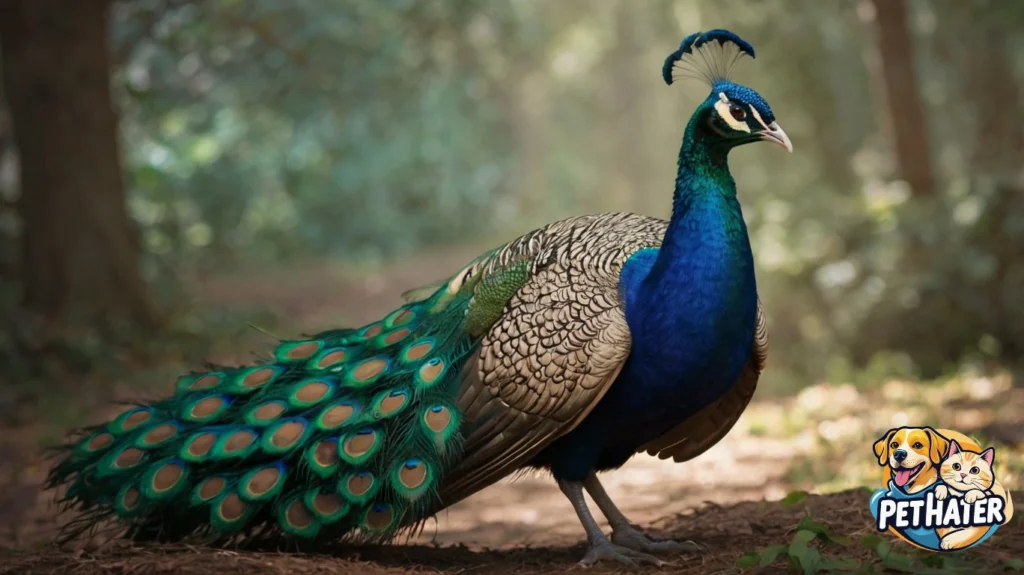
Physical Characteristics
Peacocks are most famous for their dazzling tail feathers, known as a “train.” This train can span over six feet in length and features a spectacular pattern of iridescent eyespots in blue, green, and gold hues. The train is not actually the tail but an extension of the upper tail coverts.
Key Features:
- Coloration: Male peacocks have metallic blue and green feathers, while peahens are more muted in brown and gray, providing camouflage.
- Crest: Both sexes have a fan-shaped crest on their heads, adding to their majestic appearance.
- Size: Peacocks can grow up to 45 inches in body length, excluding the train. With the train, they can reach a total length of around 100 inches.
- Weight: On average, they weigh between 8 to 13 pounds (3.5 to 6 kg).

Behavior and Courtship
Peacocks are perhaps most well-known for their elaborate courtship displays. During mating season, males fan out their trains and perform a shimmering, vibrating dance to attract peahens. The number and size of eyespots on the train play a role in sexual selection, with females often choosing mates based on the vibrancy and symmetry of the display.
Vocalizations:
Peacocks are also known for their loud, high-pitched calls, which are used to communicate with potential mates and to warn of predators. Their calls are especially common during the breeding season.
Social Structure:
Peafowls are social birds and usually form small groups. Males tend to be more solitary or display in leks (groups of males), while females may form small flocks with their young.

Habitat and Diet
Natural Habitat:
Indian peafowls are native to the Indian subcontinent but have been introduced in various parts of the world including the United States, Australia, and parts of Africa. They prefer forest edges, farmlands, and areas near water sources.
Diet:
Peafowls are omnivorous. Their diet includes:
- Insects (like ants, termites, and beetles)
- Small reptiles (like lizards and snakes)
- Grains and seeds
- Fruits and berries
- Plants and flower petals
Their varied diet helps them adapt to different environments, making them relatively resilient to changes in habitat.
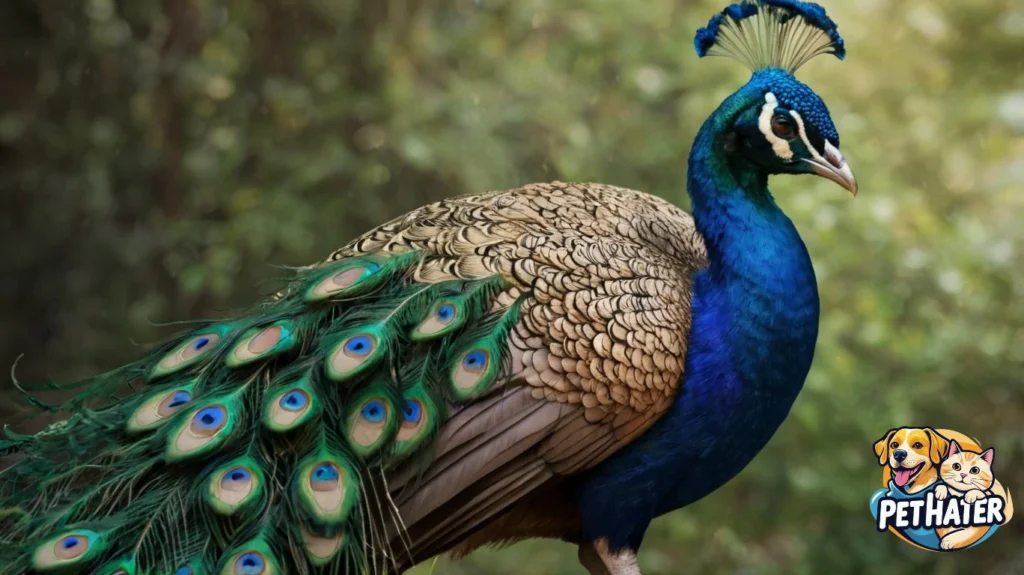
Symbolism and Cultural Significance
Peacocks hold significant symbolism in many cultures due to their striking appearance.
In India:
The Indian peacock is the national bird of India. It is associated with various deities in Hindu mythology, such as:
- Lord Krishna, who is often depicted with a peacock feather in his crown.
- Goddess Saraswati, sometimes shown riding a peacock as a symbol of wisdom and purity.
- Lord Kartikeya, who rides a peacock named Paravani.
Peacocks also symbolize beauty, elegance, pride, and immortality in Indian art and literature.
In Western Culture:
In Greek mythology, the peacock was sacred to Hera, the queen of the gods. According to myth, the eyespots on the tail represent the hundred eyes of Argus, a giant Hera had placed to watch over Io.
In Christianity, peacocks represent resurrection and eternal life due to the belief that their flesh does not decay.
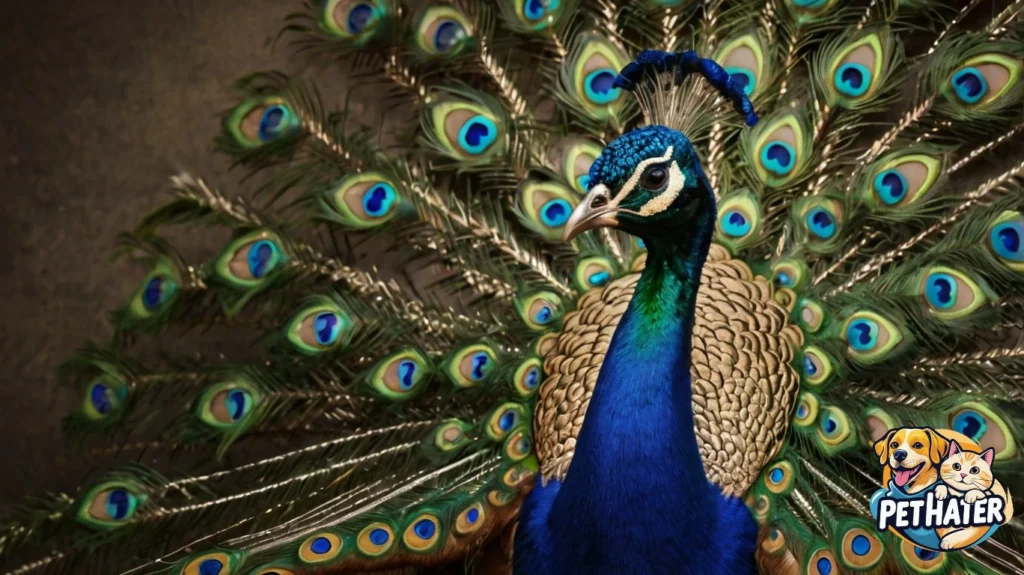
Conservation Status
The Indian Peafowl is currently listed as “Least Concern” on the IUCN Red List due to its wide distribution and stable population. However, the Green Peafowl is considered Endangered, facing threats from habitat loss, hunting, and human disturbance.
Conservation Efforts:
- Protected in many national parks and wildlife sanctuaries.
- Legal protection under the Indian Wildlife Protection Act.
- Captive breeding and habitat preservation initiatives in Southeast Asia for the Green Peafowl.
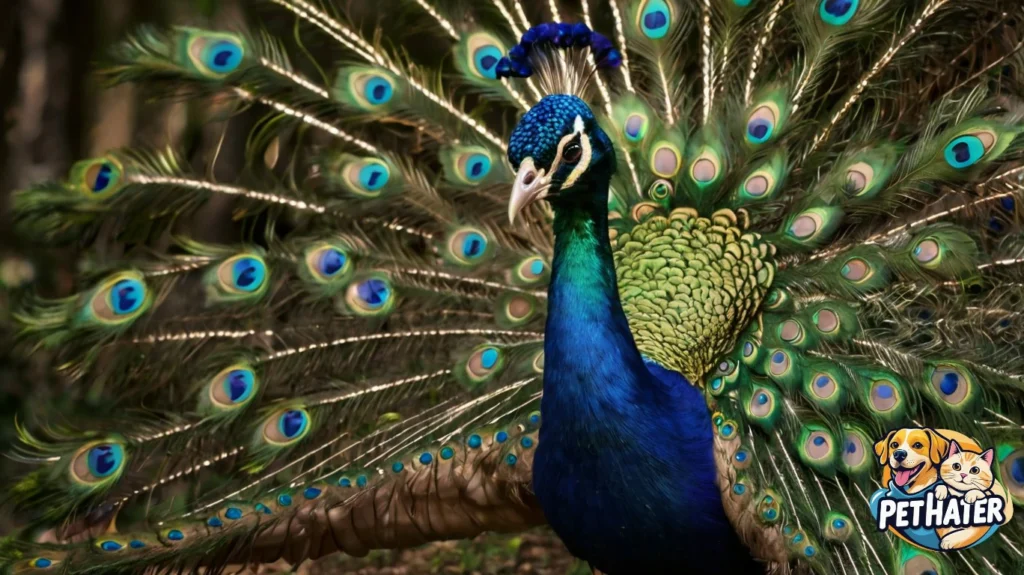
Interesting Facts About Peacocks
- Peacocks Can Fly: Despite their large size and heavy train, peacocks can fly short distances, usually to escape predators or roost in trees at night.
- Molt Season: After the breeding season, males shed their beautiful train, which regrows before the next mating season.
- Color Magic: The vibrant colors of their feathers are not due to pigments but to microscopic structures that reflect light, creating iridescence.
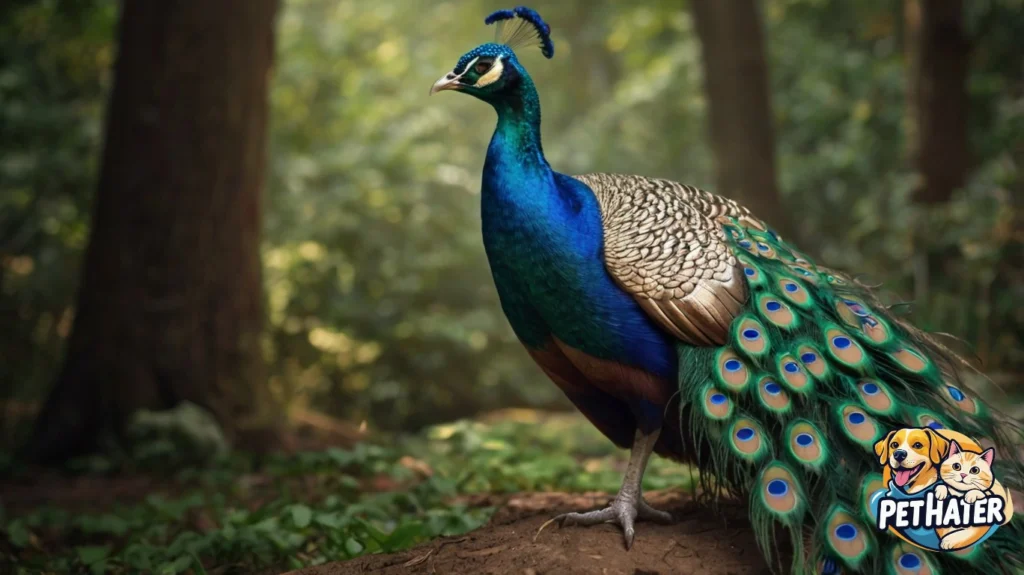
Peacocks in Modern Life
Peacocks continue to inspire fashion, architecture, and interior design. Their feathers are often used in decorative arts, though it’s important to ensure that feathers are ethically sourced. Peacocks are also popular in private aviaries and estates for their ornamental value.
Ethical Considerations:
While it may be tempting to keep peacocks as exotic pets, it’s essential to understand their needs:
- They require space to roam.
- They can be loud, especially during mating season.
- Their feathers should not be plucked or sold without ensuring humane treatment.

Conclusion
The peacock is more than just a beautiful bird—it is a symbol of natural splendor, cultural richness, and ecological resilience. Whether admired in the wild or celebrated in mythology and art, peacocks remind us of the beauty and complexity of the natural world. With proper conservation and respect, we can ensure that future generations continue to be enchanted by these living jewels of nature.
